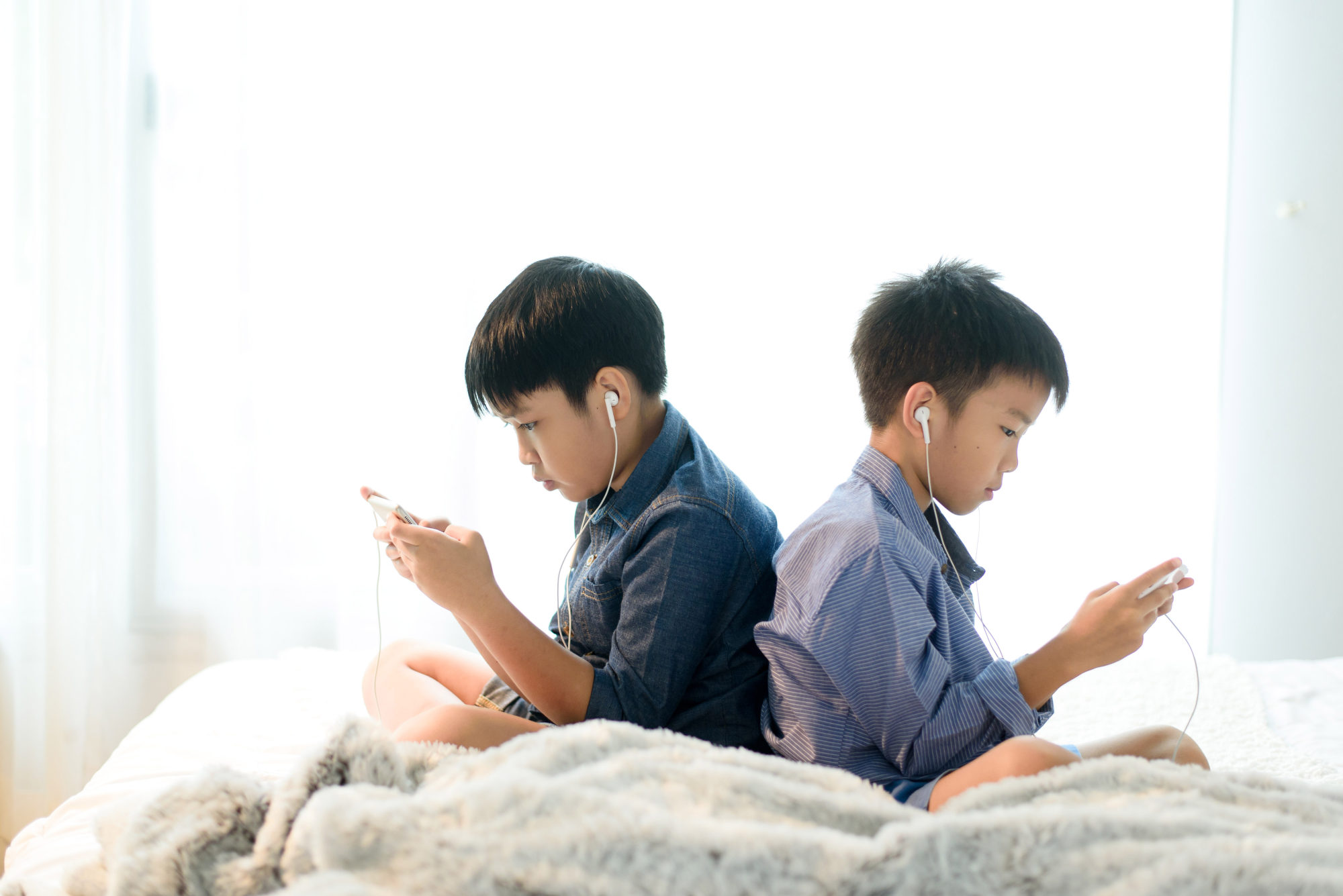
How Hong Kong’s international schools address social media’s risks and opportunities – from TikTok influencers to Facebook and Instagram followers and users of Truth Social and Twitter
- Christine Greenberg at The Harbour School stresses responsible use and respect for others, while at Hong Kong International School, younger ones start in safe closed environments like Google Docs, Padlets or Seesaw
- Skye Jeynes, ESF learning technologies lead, and Ian Clayton, deputy head of French International School, see its value in networking and pass on rules of thumb to navigate the worst risks
Debates about the pros and cons of social media won’t go away, but while others can talk in abstracts, international schools in Hong Kong have to come up with workable guidelines that address everyday realities and somehow strike a balance between the inherent risks and the tantalising possibilities.
That is no easy task, especially when “digital native” students are a step or more ahead of teachers and parents in adopting the latest apps, and any “rules” about access or usage are easily circumvented or just ignored.
But in a world where social media is almost omnipresent – from mums and dads on Facebook to the itchy-fingered know-alls of Truth Social and Twitter, the cat lovers on Instagram, and the influencers driving TikTok and tomorrow’s latest craze – each school needs a clear policy and approach.
Social media as a fact of life
In practice, that can mean making searches on mobiles or creative use of a favourite app an accepted classroom activity and part of a standard lesson plan. During talks about careers, it may mean highlighting all the new types of role – full-time as well as freelance – fast emerging in fields like sales, marketing, design, technology and communications.
But importantly, it also means providing expert help and support for students who, one way or another, discover that social media is not always their friend. A whole new vocabulary has been coined in recent years to reflect the threats and dangers: cyberbullying, doxxing, online scams, identity theft, and much more of an explicit sexual nature. So, schools must also have access to trained counsellors ready to step in when needed to offer sympathetic advice and perhaps some straight talking to break the cycle.
“First of all, we have to acknowledge that social media now frames the live of students from the age of 12 upwards,” says Ian Clayton, deputy head of the French International School (FIS). “So you cannot ignore it, ban it, or say it’s bad for you. It exists, but we can give advice and rough rules of thumb about language and interactions online.”

A usual starting point is to explain the concept of the digital tattoo – what you put out there cannot simply be erased or deleted. Students also hear about the “grandma test”, essentially asking yourself if she would be proud to see the content of your posts and profile.
“We look at it holistically and talk about the positive, but also about how social media creates ‘perfect lives’ and comparisons to lives different from your own,” says Clayton, who is also head of the international stream at FIS. “That can lead to depression and anxiety, so we mention options and that, if students get into difficulties, there are significant adults to help them at school. They don’t just have to rely on their peers to solve social media issues.”
One persistent worry, he notes, is the unremitting 24/7 presence, along with the pressures and changes in behaviour it inevitably brings. That comes from the speed, from the instantaneous nature of responses and from the power of the algorithm. The latter keeps things fresh for kids, but also creates any number of’ “rabbit holes”, prompting the endless checking of phones and hours a day staring at screens.
Worse, though, is the pile-on effect that can happen when others join in a chorus of hate for no particular reason. Such a situation is a minefield to navigate.
We look at it holistically and talk about the positive, but also about how social media creates ‘perfect lives’ and comparisons to lives different from your own
“If one kid makes a derogatory comment, it is in front of 20 others straight away,” Clayton says. “What kids talk about with these platforms and apps is a bit like passing a note round the class in the old days, but it is multiplied by 10,000. And something like Snapchat gives them a kind of subculture. Teenagers always had that – it makes them feel different. But it also means they can mislead parents into thinking what they discuss is very wholesome.”
To address specific concerns, FIS has an open line for communication with parents and encourages self-referral. There are plans to restart in-person workshops in the coming months. Meetings take place with “elected” parents at least once a term. And outside experts are invited in periodically to give an alternative perspective and speak about new social media trends among students in Hong Kong and further afield.
“We do have ‘rules’, but aimed at promoting a healthy lifestyle and balance, so students are not on devices eight hours a day and at weekends,” Clayton says. “We try to put some responsibility on kids to organise their time in a structured way. Regarding the very latest developments, teachers are a little bit behind the curve, so it is all about being judicious and tying advice into the bigger picture of mental and physical health.”
Tools not toys

At The Harbour School (THS), the emphasis is similarly on teaching responsibility from an early age and ensuring pupils understand the consequences of their actions, rather than employing a more coercive model of rules and guidelines.
For this, there is a “tools not toys” curriculum starting from Grade 3, so kids gain a sense of their place in their communities, both digital and in person, as soon as they start working with devices.
“THS has always been about preparing students for the future and that means recognising the trajectory of socialisation into the digital realm,” says Christine Greenberg, the primary and middle school principal. “It is very easy to come up with rules, [yet] very hard to establish a culture of empathy, kindness and respect. But the latter plays the most crucial role.”
That said, there is one rule the school does teach. In essence, if your “real self” wouldn’t do something with a grandparent watching on, then your “virtual self” shouldn’t do it either. So, for instance, it’s not OK to lie about your identity or hide behind a spam or alt account to say or do anything in the increasingly broad category of mean things.
The other unwritten rule to take full advantage of the many positives. First among those is that students have incredible agency, which makes them more apt to learn difficult and sophisticated skills that can be put to immediate practical use.
Indeed, a group of THS sixth graders recently set up an International People’s Culture Club with a website and games children that play around the world. It all sprang from their sense of reach and empowerment, and the project taught useful skills such as video editing, script writing, honing a five-minute pitch and understanding the customer.
“Generally speaking, most students are conscientious,” Greenberg says. “But, of course there are always a few in every school who experiment with the usual problems: irresponsible use of the chat function, spamming, the sinister side of anonymity and forwarding inappropriate material. Therefore, it is important to get parents involved because they set the tone and culture during down time like weekends and holidays when social media is likely to be used the most.”
For this reason, THS makes a point of sharing its programmes with parents and explaining the school’s expectations and rationale, so that key lessons can be reinforced at home.
“Being a good person has much to do with being prepared and knowing about societal norms and consequences,” Greenberg says. “We cannot do that if we’re avoiding certain topics.”
For students at Hong Kong International School (HKIS), lessons in digital citizenship now begin in upper primary, with the focus on learning to be safe and responsible. The topics include digital footprints, privacy and security, media balance and well-being. And although the pupils are younger than the recommended age for using most social media apps, they can practise posting and commenting to their peers in safe closed environments like Google Docs or slides, collaborative Padlets and Seesaw portfolio posts.
“The positives include the ability to connect and share ideas with others,” says Amy Garrett, upper primary instructional coach at HKIS. “This doesn’t come without challenges or risks, but we all know how much our lives now revolve around digital communication, so while it’s easy to be worried about the implications of social media, it’s also easy to see social benefits.”
We hope that as our older students leave, they are well on the way to cultivating a positive digital footprint that they can be proud to share with college admissions officers and possible future employers
In the more senior grades, as students begin to have more independence with their devices, they are taught how to find balance and communicate effectively. This is done in health lessons, not in STEM or IT classes, as well as in workshops led by the school’s counselling team.
The health focus is on skills like decision-making, accessing valid information and using appropriate language, which also have wider relevance. And, going further, HKIS also runs a “digital citizenship week” where high school groups create videos and awareness campaigns to instruct younger pupils.
“We hope that as our older students leave, they are well on the way to cultivating a positive digital footprint that they can be proud to share with college admissions officers and possible future employers,” says Amy Smith, high school health teacher and coordinator at HKIS.
“During the pandemic, social media acted as a life raft that kept students connected to their peers and the outside world. Now I encourage them to look for positive influences online and follow people who are using their platforms to advocate for issues, raise awareness and help bring about social change.”
According to Skye Jeynes, ESF learning technologies lead, it makes sense to regard links to the online world as incredibly valuable tools for creating content, sharing and networking with others. In fact, social media should be seen as an authentic platform for real-world teaching and as a way to prepare students for everyday life outside the classroom.
“Quite simply, by being proactive, promoting positive habits and addressing potential issues in good time, schools are helping to create a safer and more productive learning environment for students,” Jeynes says.
